9 Property from the Estate of Dr. Fredric S. Brandt, Miami Yoshitomo Nara Missing in Action 2000 acrylic on canvas 164.7 x 149 cm (64 7/8 x 58 5/8 in.) Signed, titled, and dated 'Yoshitomo Nara "Missing in Action" 2000' on the reverse.
Provenance McCabe Fine Art Literature Yoshitomo Nara Lullaby Supermarket, exh. cat., Institut für Kunst Nürnberg, Nürnberg, 2001, p. 167 and p. 199 (illustrated) N. Miyamura, S. Suzuki, eds., Yoshitomo Nara the Complete Works, Volume 1: Paintings, Sculptures, Editions, Photographs, San Francisco: Chronicle Books, 2011, p. 168 (illustrated) Catalogue Essay “This is melancholy. When artistic production involves self-reflection, it refers to a lived childhood, individual and collective, to which there is no return. There is a poem by Yoshitimo Nara on the inexorable nature of passing time: “Time passes by / Before it fades and vanishes. I want to grab even a bit and make it last, / Imagination doesn’t stop for the past or the future. And that makes me both happy and sad” (D. Krystof and B. Schwenk, “If You are Lucky,You are Hit by the Window,” Yoshitomo Nara Hiroshi Sugito Over the Rainbow, Ostfildern, 2004, p. 73). Yoshitomo Nara’s iconic depictions of devilish little children have become symbols of Japanese Neo-Pop and it is through their popularity that the artist solidified his reputation as one of the most renowned contemporary painters of our time. Bridging the visual language of Western Modernism with Japanese popular culture, Nara creates a dialogue between manga, anime, punk rock and Disney, to name a few. The fusion of these wide-reaching strands gives his paintings an immediately recognisable appearance. Missing in Action is a prominent example of Nara’s huge body of works portraying pre-adolescent children often depicted in solitary landscapes or against void-like monochrome backdrops. Dominating the canvas the small girl shown here displays Nara’s typically abrasive, yet undeniably delicate approach. With her rounded cheeks and clothed in a dress that appears a size too long on her arms (only adding to the endearing quality), it is difficult to take the child’s indignant expression too seriously. What Nara masterfully encapsulates therefore, is kimo kawaii, a Japanese genre of art which literally translates to “disgusting cute”. His disgruntled and often aggressive wide-eyed children confront their audiences and in this way Nara invites viewers to reconnect with their inner child – specifically the defiant spirit most associated with youthful rebellion. Similarly, for Nara himself, returning to this subject matter throughout his oeuvre demonstrates the cathartic effect induced by his painting process. In a way he too, is trying to return to the most honest way of being. Painting to the sound of punk rock at night forms part of this ritual and only highlights the affinity between this music genre’s rebellious disassociation from the mainstream, with the temperament of his painted figures. One of the most enticing aspects of Nara’s depictions of children is the way their cutting gazes and nuanced expressions convey a sense of knowing suggesting that despite their youthful appearance and sweet features, these children know what the world has in store. The titles of many of Nara’s works bring to light this contradiction and Missing in Action is no exception. The term used here is more commonly employed as wartime jargon when a soldier becomes a casualty during a time of fighting but his location and exact state remain unknown. The question this generates immediately is: how does this title relate to the girl standing before us? Is the child therefore, a casualty of war? Or of her future self? Or is her resolute and stubborn expression a sign of her youthful determination to change the world she lives in when her time comes. No obvious explanation is offered; instead, ambiguity returns the viewer to the painting to seek answers. Read More
9 Property from the Estate of Dr. Fredric S. Brandt, Miami Yoshitomo Nara Missing in Action 2000 acrylic on canvas 164.7 x 149 cm (64 7/8 x 58 5/8 in.) Signed, titled, and dated 'Yoshitomo Nara "Missing in Action" 2000' on the reverse.
Provenance McCabe Fine Art Literature Yoshitomo Nara Lullaby Supermarket, exh. cat., Institut für Kunst Nürnberg, Nürnberg, 2001, p. 167 and p. 199 (illustrated) N. Miyamura, S. Suzuki, eds., Yoshitomo Nara the Complete Works, Volume 1: Paintings, Sculptures, Editions, Photographs, San Francisco: Chronicle Books, 2011, p. 168 (illustrated) Catalogue Essay “This is melancholy. When artistic production involves self-reflection, it refers to a lived childhood, individual and collective, to which there is no return. There is a poem by Yoshitimo Nara on the inexorable nature of passing time: “Time passes by / Before it fades and vanishes. I want to grab even a bit and make it last, / Imagination doesn’t stop for the past or the future. And that makes me both happy and sad” (D. Krystof and B. Schwenk, “If You are Lucky,You are Hit by the Window,” Yoshitomo Nara Hiroshi Sugito Over the Rainbow, Ostfildern, 2004, p. 73). Yoshitomo Nara’s iconic depictions of devilish little children have become symbols of Japanese Neo-Pop and it is through their popularity that the artist solidified his reputation as one of the most renowned contemporary painters of our time. Bridging the visual language of Western Modernism with Japanese popular culture, Nara creates a dialogue between manga, anime, punk rock and Disney, to name a few. The fusion of these wide-reaching strands gives his paintings an immediately recognisable appearance. Missing in Action is a prominent example of Nara’s huge body of works portraying pre-adolescent children often depicted in solitary landscapes or against void-like monochrome backdrops. Dominating the canvas the small girl shown here displays Nara’s typically abrasive, yet undeniably delicate approach. With her rounded cheeks and clothed in a dress that appears a size too long on her arms (only adding to the endearing quality), it is difficult to take the child’s indignant expression too seriously. What Nara masterfully encapsulates therefore, is kimo kawaii, a Japanese genre of art which literally translates to “disgusting cute”. His disgruntled and often aggressive wide-eyed children confront their audiences and in this way Nara invites viewers to reconnect with their inner child – specifically the defiant spirit most associated with youthful rebellion. Similarly, for Nara himself, returning to this subject matter throughout his oeuvre demonstrates the cathartic effect induced by his painting process. In a way he too, is trying to return to the most honest way of being. Painting to the sound of punk rock at night forms part of this ritual and only highlights the affinity between this music genre’s rebellious disassociation from the mainstream, with the temperament of his painted figures. One of the most enticing aspects of Nara’s depictions of children is the way their cutting gazes and nuanced expressions convey a sense of knowing suggesting that despite their youthful appearance and sweet features, these children know what the world has in store. The titles of many of Nara’s works bring to light this contradiction and Missing in Action is no exception. The term used here is more commonly employed as wartime jargon when a soldier becomes a casualty during a time of fighting but his location and exact state remain unknown. The question this generates immediately is: how does this title relate to the girl standing before us? Is the child therefore, a casualty of war? Or of her future self? Or is her resolute and stubborn expression a sign of her youthful determination to change the world she lives in when her time comes. No obvious explanation is offered; instead, ambiguity returns the viewer to the painting to seek answers. Read More
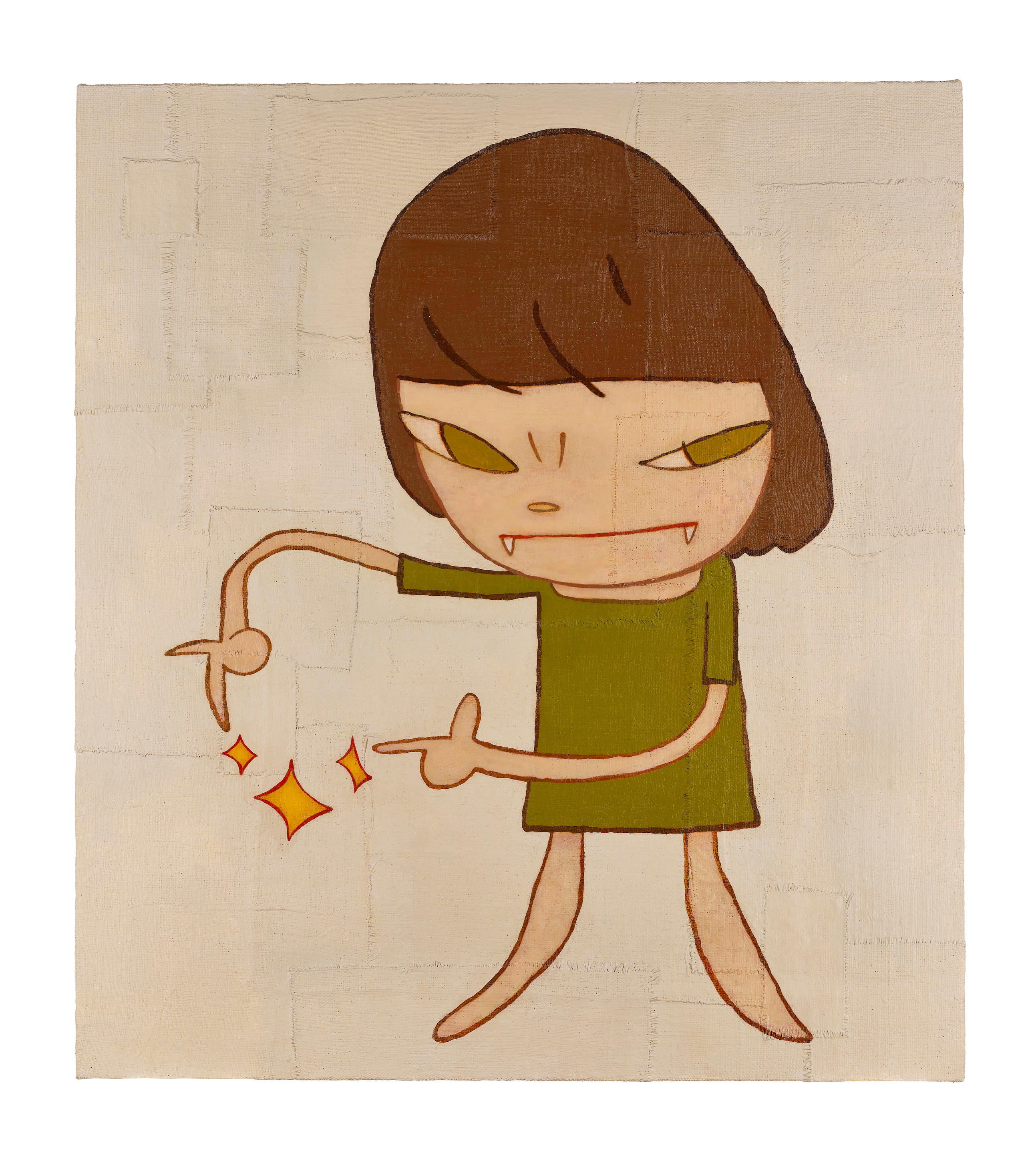
.jpg)

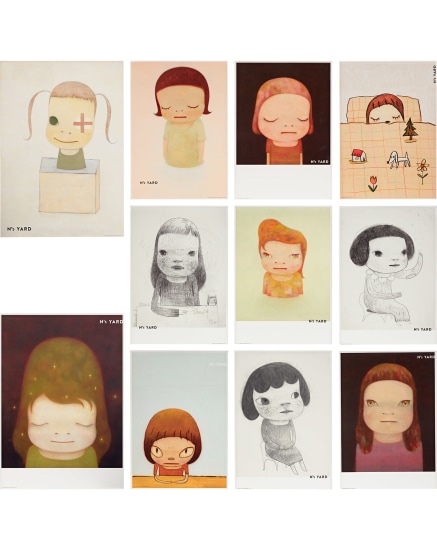

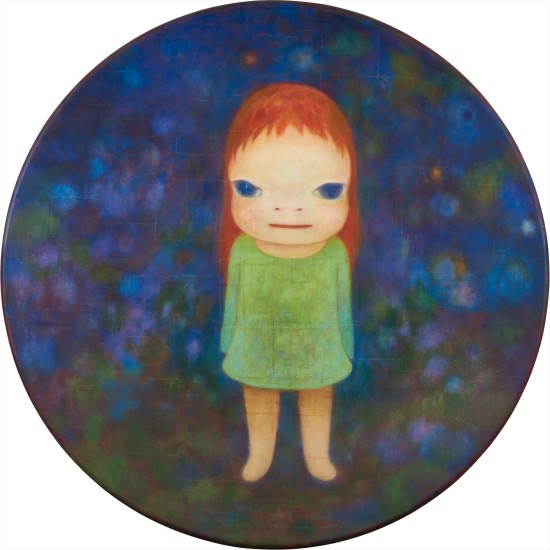
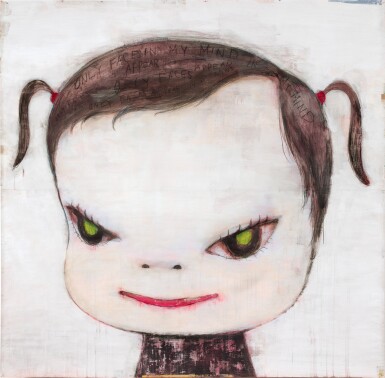
.jpg)

.jpg)
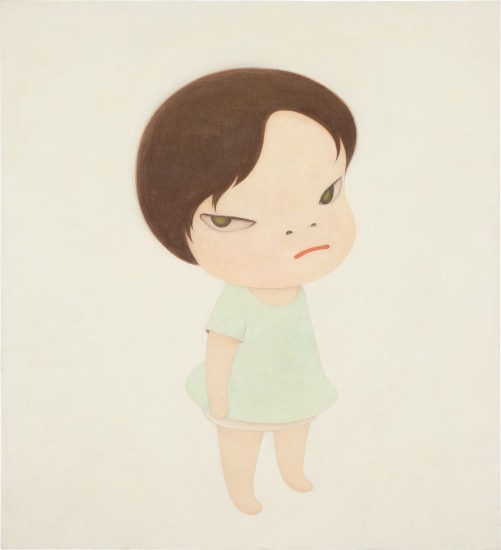
.jpg)


Testen Sie LotSearch und seine Premium-Features 7 Tage - ohne Kosten!
Lassen Sie sich automatisch über neue Objekte in kommenden Auktionen benachrichtigen.
Suchauftrag anlegen